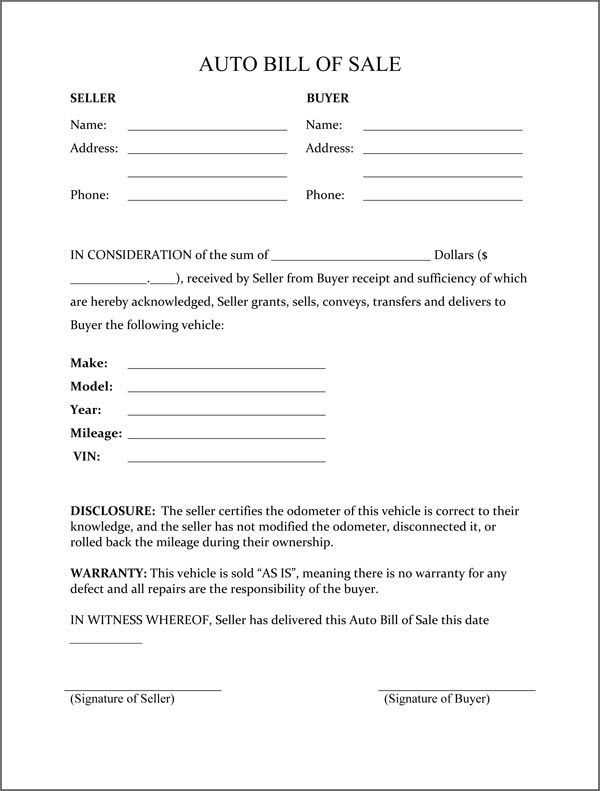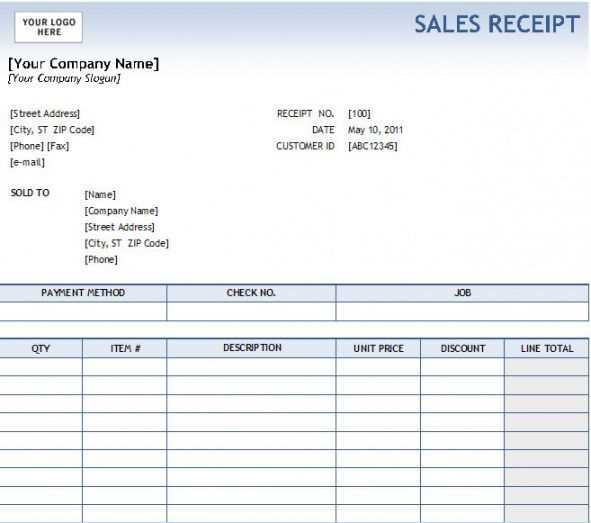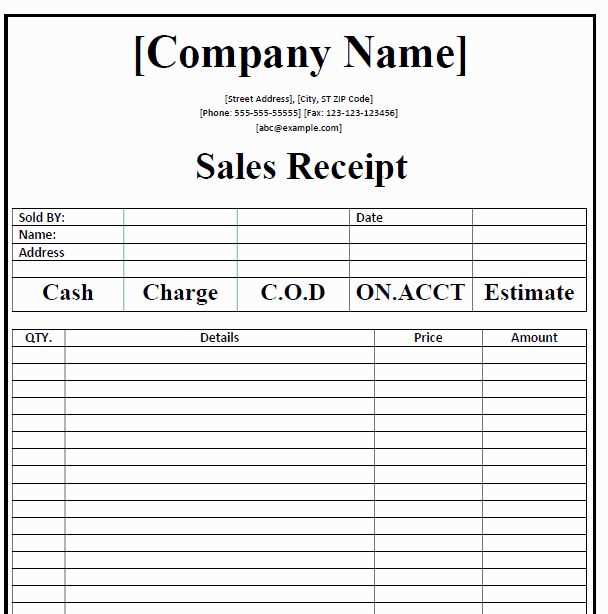
When selling a car “as-is” in California, it’s crucial to use a clear and legally sound receipt template. This document helps protect both the buyer and the seller by confirming that the vehicle is sold without any warranties or guarantees. Make sure to include key details such as the car’s make, model, year, Vehicle Identification Number (VIN), and odometer reading at the time of sale.
Ensure the buyer acknowledges they are purchasing the vehicle in its current condition, with no implied warranties. A statement such as, “This vehicle is sold as-is with no warranty expressed or implied,” should be included. This reinforces that the seller will not be held responsible for any future repairs or issues that arise after the sale.
Also, be sure to include both parties’ signatures and the date of sale on the receipt. Without these, the document may not be enforceable in legal situations. Having a clear receipt template in place provides peace of mind for all involved and ensures the transaction is transparent and legally binding.
Sale Car As Is Template Receipt California

When selling a car in California “as is,” it’s crucial to use the proper documentation to protect both the buyer and the seller. This template receipt serves as an official record of the transaction, detailing the vehicle’s condition, sale terms, and buyer acknowledgment. Below are the key sections and elements to include in your “As Is” sale receipt.
Key Information to Include
- Seller Information: Name, address, and contact details.
- Buyer Information: Name, address, and contact details.
- Vehicle Details: Make, model, year, VIN, and mileage.
- Sale Price: Total agreed price of the vehicle.
- As Is Disclaimer: A clear statement that the car is sold “as is” without any warranty, including the condition of the car at the time of sale.
- Signatures: Both the seller and buyer must sign the receipt. The date should also be included.
Important Notes on “As Is” Sales
- No Warranties: The “as is” sale means the buyer accepts the vehicle’s current condition, and the seller makes no guarantees about its performance or future repairs.
- Buyer’s Acknowledgment: The buyer should understand and agree to the condition of the car before purchasing. Include a statement confirming that the buyer is aware of the car’s state.
- Inspection Clause: Mention whether the buyer has had the chance to inspect the vehicle before purchase.
Using this template will help ensure that all necessary information is documented clearly, minimizing disputes and misunderstandings. Make sure both parties keep a copy of the receipt for their records.
How to Properly Draft a “Sale As Is” Receipt for a Car in California
In California, a “Sale As Is” receipt must clearly indicate that the car is being sold without any warranties or guarantees. This protects the seller from future claims by the buyer regarding the vehicle’s condition. The following steps will guide you in drafting a legally sound receipt.
Include Key Information
The receipt should contain the following details:
- Vehicle Identification Number (VIN) – The VIN ensures the car is properly identified.
- Make, Model, and Year – Include the car’s make, model, and year of manufacture for identification purposes.
- Odometer Reading – Record the current mileage of the vehicle.
- Buyer and Seller Information – Full names, addresses, and contact information of both parties.
- Date of Sale – The exact date the car changes ownership.
- Purchase Price – State the agreed-upon price for the vehicle.
State the “As Is” Clause Clearly

Use clear, unambiguous language to indicate that the vehicle is being sold “As Is,” without any warranty, either express or implied. You should include a statement such as: “The vehicle is sold as is, with no guarantees or warranties regarding its condition or performance.” This statement helps avoid any misunderstandings later.
Ensure both parties sign and date the receipt. This confirms that the buyer understands the condition of the vehicle and agrees to the terms outlined in the receipt.
Understanding California’s “As Is” Clause and Its Legal Implications
The “As Is” clause in California car sales contracts transfers the risk of defects from the seller to the buyer. By agreeing to this clause, the buyer acknowledges they are purchasing the vehicle in its current condition, with all its flaws and issues. This means the seller is not responsible for repairs, and the buyer accepts the vehicle without any warranties regarding its condition or functionality.
Key Legal Considerations

Under California law, an “As Is” clause does not exempt the seller from disclosing certain information. Sellers must still comply with state laws that require them to disclose material defects that could affect the car’s safety or performance. For example, if a car has been involved in an accident or has an outstanding recall, these must be disclosed, regardless of the “As Is” condition. Failure to disclose such information could result in legal action against the seller.
Implications for Buyers
When buying a car “As Is,” buyers should take extra steps to inspect the vehicle thoroughly before completing the sale. It’s recommended to have a trusted mechanic check for any hidden defects or maintenance issues. While the “As Is” clause limits the buyer’s ability to seek a refund or repair from the seller, it does not override the buyer’s right to pursue legal action for fraud or misrepresentation if the seller fails to disclose known issues.
Common Mistakes to Avoid When Issuing an “As Is” Car Sale Receipt

One of the most frequent mistakes is failing to clearly state “As Is” on the receipt. Without this, the buyer might assume the car comes with warranties or guarantees, which can lead to future disputes. Always include “As Is” in bold or underlined to make it unmistakable.
1. Lack of Detailed Vehicle Condition Description
Don’t leave the car’s condition vague. Describe any known issues or the vehicle’s overall state in detail. This prevents misunderstandings about what the buyer is accepting. Be specific about mechanical problems, body condition, or cosmetic defects.
2. Missing Signatures
Ensure both the buyer and seller sign the receipt. Without signatures, it might be difficult to prove the sale took place under “As Is” terms. Always check that both parties sign and date the document at the time of the transaction.
3. Ignoring State-Specific Requirements

Each state has specific rules for car sales. In California, for instance, the receipt should include the buyer’s and seller’s names, addresses, and the Vehicle Identification Number (VIN). Double-check your state’s regulations to ensure all required information is included.
4. No Acknowledgment of Title Transfer
Include a statement that confirms the transfer of the car title. This makes it clear the buyer is now responsible for the vehicle, and it prevents any confusion over ownership. Be sure the title is also signed over at the time of the sale.
5. Forgetting to Include Payment Details
Always list the sale price and payment method (cash, check, bank transfer, etc.). If there are any remaining balances or specific payment arrangements, include those as well. This ensures that both parties are clear about the financial terms.


